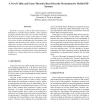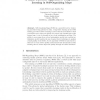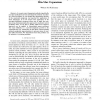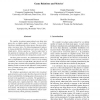536 search results - page 37 / 108 » Computing Spatial Similarity by Games |
90
Voted
PERCOM
2008
ACM
16 years 8 days ago
2008
ACM
Research on security in Peer-to-Peer (P2P) systems is dominated by reputation-based solutions. These solutions propagate opinions about other peers in order to help identify the b...
115
click to vote
ICNC
2005
Springer
15 years 6 months ago
2005
Springer
Abstract. Self-Organizing Maps (SOM) is a powerful tool for clustering and discovering patterns in data. Competitive learning in the SOM training process focusses on finding a neu...
80
Voted
CDC
2009
IEEE
15 years 5 months ago
2009
IEEE
— In recent years, idempotent methods (specifically, max-plus methods) have been developed for solution of nonlinear control problems. It was thought that idempotent linearity o...
102
Voted
ECCV
1992
Springer
16 years 2 months ago
1992
Springer
Abstract. Binocular di erences in orientation and foreshortening are systematically related to surface slant and tilt and could potentially be exploited by biological and machine v...
101
Voted
LICS
2007
IEEE
15 years 7 months ago
2007
IEEE
We consider two-player games played over finite state spaces for an infinite number of rounds. At each state, the players simultaneously choose moves; the moves determine a succ...




